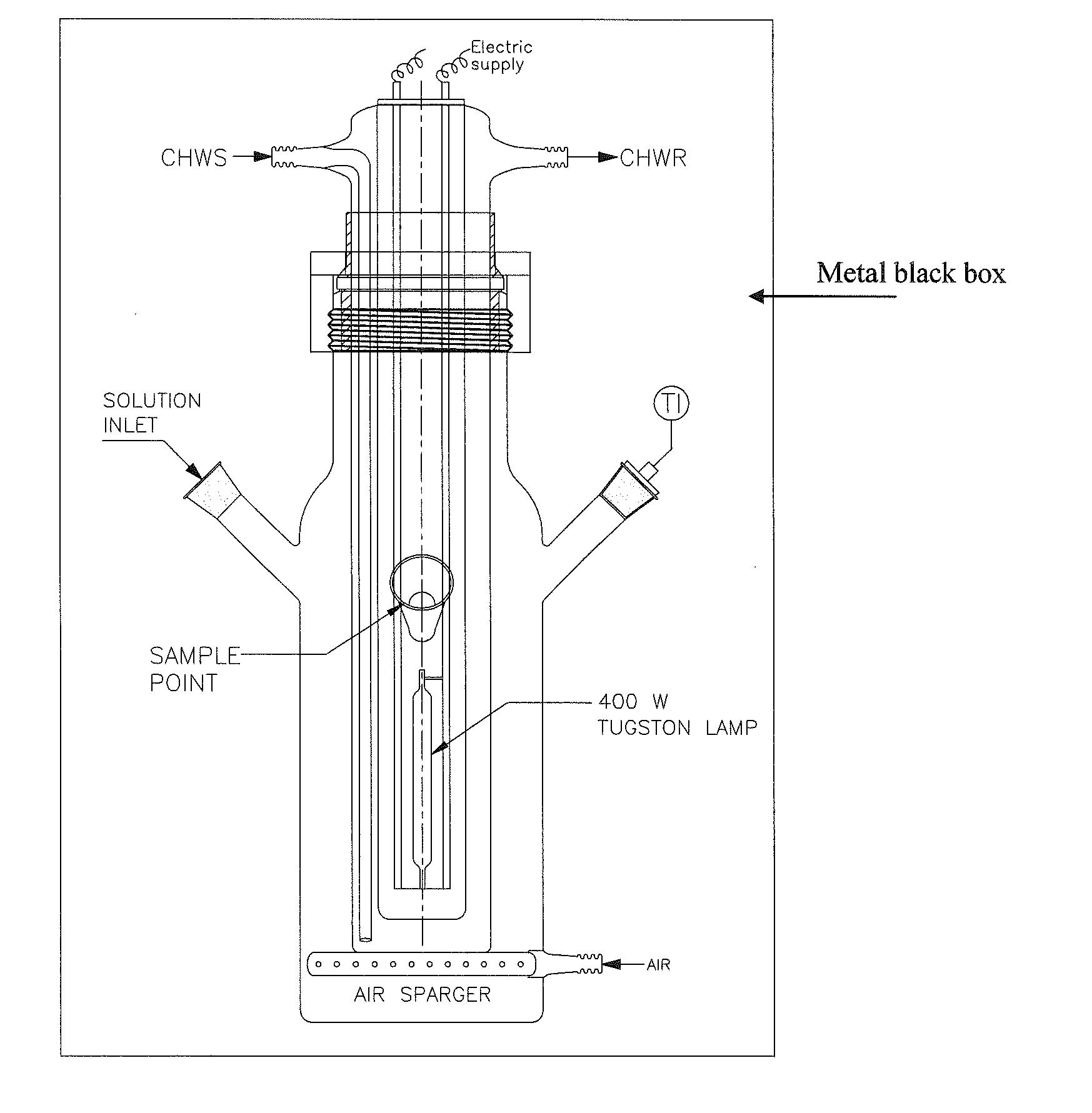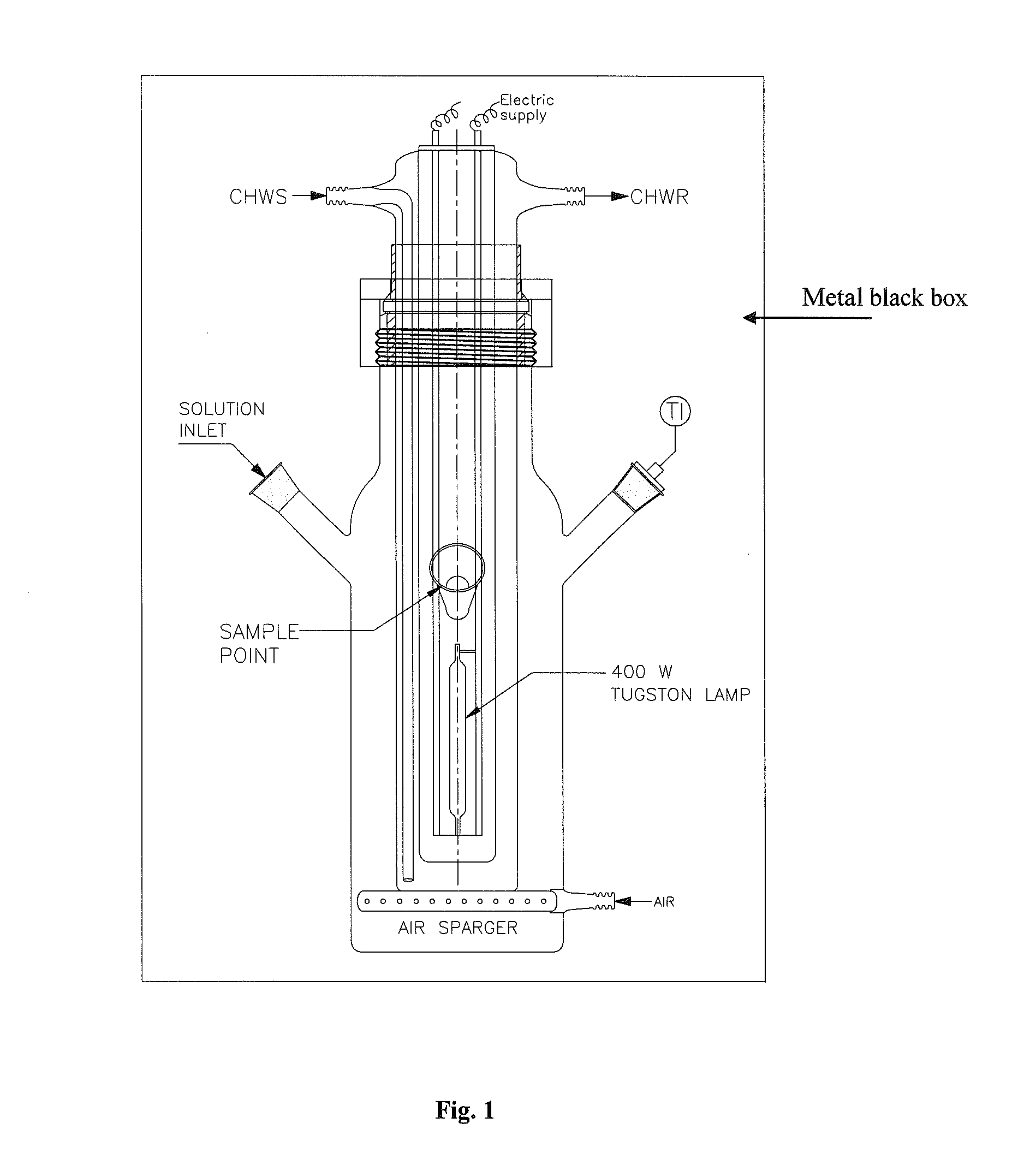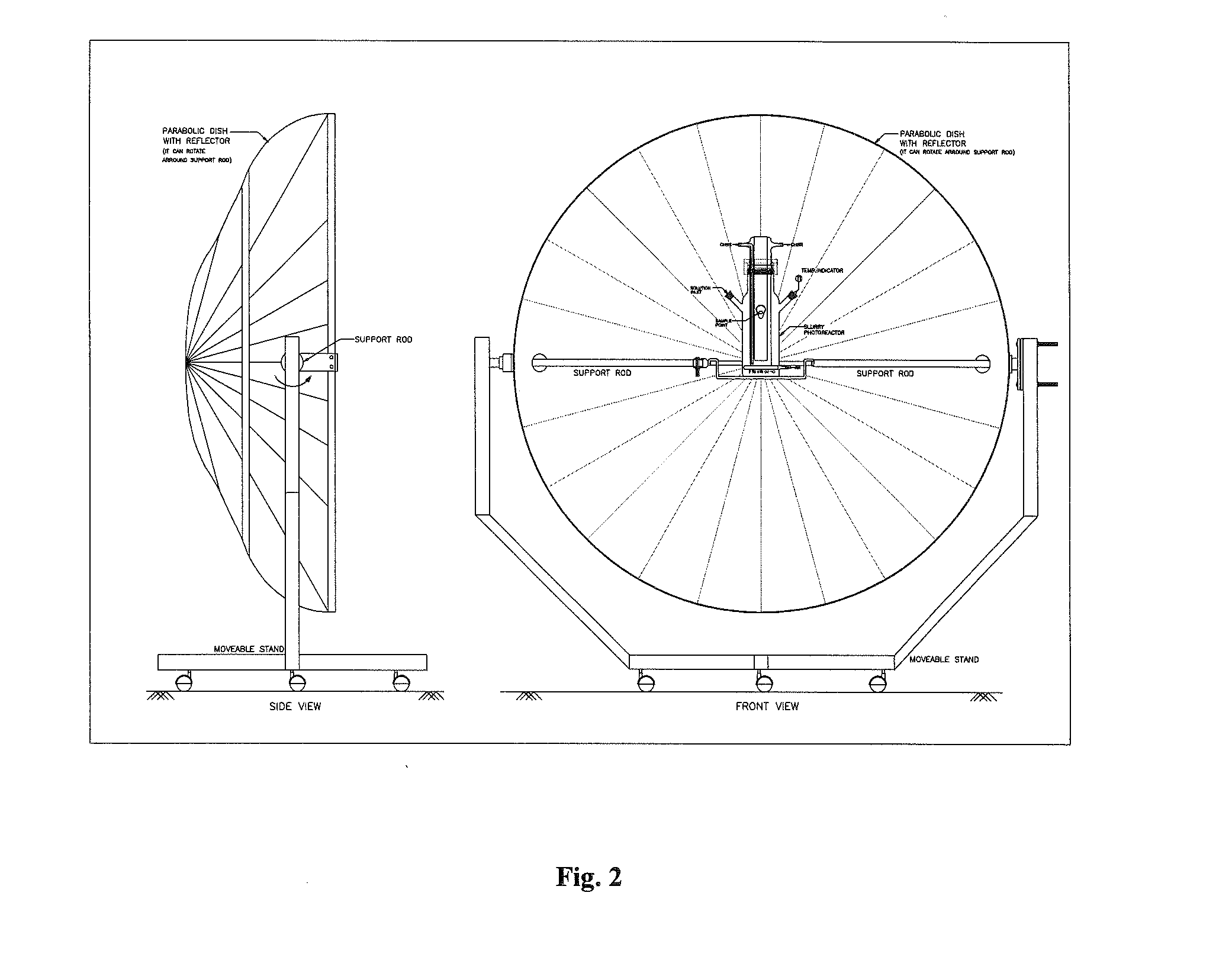Photocatalytic degradation of pharmaceutical drugs and dyes using visible active biox photocatalyst
a biox photocatalyst and photocatalyst technology, applied in catalyst activation/preparation, natural mineral layered products, synthetic resin layered products, etc., can solve the problems of compound removal is often hardly biodegradable, and inefficient removal of conventional wastewater treatment plants
- Summary
- Abstract
- Description
- Claims
- Application Information
AI Technical Summary
Benefits of technology
Problems solved by technology
Method used
Image
Examples
example 1
Preparation of BiOS Photocatalyst
[0065]A composite of BiOS was prepared by using sol gel method. The preparation procedure is quite simple. Initially 100 ml of absolute ethanol was taken it to the beaker. Then 10 g of bismuth (III) oxide powder was added in to the beaker containing ethanol. The ratio of bismuth oxide to ethanol was kept 1:10. The mixture was kept on magnetic stirrer and then 50 ml of concentrated sulfuric acid (98%) was added at the rate of 10 ml at the time interval of 30 min. The ratio of ethanol to sulfuric acid must be kept 2:1. The temperature of mixture was kept at 40° C. The mixture is sonicated in an ultra-sonication bath for 1 hr, after which a thick precipitate was formed. The mixture was washed alternately with ethanol and DI (deionized) water for 5 times each. The white semisolid material was dried in a vacuum oven for 24 hrs.; white crystals are formed. The crystals are crushed into fine powder which is calcined at 500° C. for 12 hrs. Thus a fine white ...
example 2
Experimental Procedure for Photocatalytic Degradation of Pharmaceutical Pollutants Using Artificial and Solar Radiation
[0067]An annular borosilicate glass reactor as shown in FIG. 1 was used as a photocatalytic reactor for performing the photocatalytic oxidation reaction. A visible tungsten lamp with power rating 400 watts was used as the source of artificial radiation. The whole assembly was enclosed in a metallic box painted internally and externally with black paint. De-ionized water (prepared using the Millipore Milli-Q system) was used to prepare aqueous solutions of pollutant pharmaceuticals or dyes. The temperature of reaction mixture was kept at about 25° C. by circulating chilled water through the annular space between the lamp via JULABO chiller FP-50 MA. In each experiment 500 ml of solution was charged in the reactor. An air at rate of 1 L / min required for the oxidation reaction and to keep all the BiOX in suspension was supplied via a ring sparger located at the bottom ...
example 3
BiOS Photocatalytic Degradation of Orange Dye
[0069]BiOS can also be used for PCD of orange dye in presence of artificial radiation. Following Table 1 shows the experimental conditions and result of the conducted experiment.
TABLE 1Experimental conditions and result ofphotocatalytic degradation of Orange dye in presence ofartificial radiation.Experiment Conditions: Photocatalyst: BiOS; Photocatalyst loading: 1 g / L;Pollutant: Orange Dye, Pollutant Conc.: 50 ppm;Source of Irradiation: Artificial Radiation; Tungsten lamp: Power inputrating = 400 W.Time (min)Concentration, TOC* (ppm)Initial48.5 036 6028.512024.118020.324017.4*TOC = total organic carbon
PUM
 Login to View More
Login to View More Abstract
Description
Claims
Application Information
 Login to View More
Login to View More - R&D
- Intellectual Property
- Life Sciences
- Materials
- Tech Scout
- Unparalleled Data Quality
- Higher Quality Content
- 60% Fewer Hallucinations
Browse by: Latest US Patents, China's latest patents, Technical Efficacy Thesaurus, Application Domain, Technology Topic, Popular Technical Reports.
© 2025 PatSnap. All rights reserved.Legal|Privacy policy|Modern Slavery Act Transparency Statement|Sitemap|About US| Contact US: help@patsnap.com



